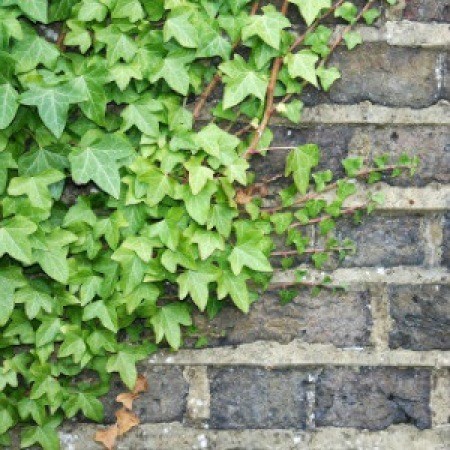Growing climbing ivy has its pros and cons. It's easy to grow. It looks beautiful. And it can be beneficial to both the wall it's growing on, as well as to backyard wildlife.
Unfortunately, it can also be the cause of many problems that are both costly and difficult to remedy. If you're thinking about planting climbing ivy near your house or in your garden, here are some things to consider.
It's best to grow climbing ivy on sound brick surfaces-those with cement-based mortar, and properly pointed joints. Older brick homes (pre-1930s) may have been built using different mortars from those used today.
If you have an older home, inspect the walls for existing cracks in bricks and weakened mortar before planting climbing ivy. Ivy doesn't cause mortar to crack and crumble, but if it's already unsound, it will definitely help speed up the process.
Advantages:
Disadvantages:
Climbing ivy is programmed to climb skyward toward the light. When it climbs up trees it doesn't kill them directly, but rather inadvertently. As ivy climbs toward the canopy in search of more light, it spreads across the tree's branches and prevents light from reaching the tree's leaves. It also makes pollen and seed dispersal difficult. As a result, lower branches eventually start to die back, leaving the tree with only a small amount of upper branches to carry out photosynthesis (food production). If the weakened tree doesn't succumb to insects and disease first, eventually it may die due to an incapacity to produce enough food for itself.
Climbing ivy on the side of a house needs to be kept well maintained and trimmed so that it doesn't start to engulf windows, doors, gutters and roof eaves, or block aeration vents.
Around windows, stems should be pruned well back from wooden frames, since ivy's aerial roots can easily work their way in between wood and wall.
Houses with exteriors made from shingles or vinyl should keep climbing ivy contained to a trellis at least a foot away from the exterior wall so aerial roots don't pry behind the siding.
If you ever decide to remove climbing ivy from a wall of your house, you need to be cautious. Test removal on a small area first to determine how embedded it is into the wall and how much (if any) damage will occur as a result of removing it. In some cases, it may be better just to leave the ivy where it is.

About The Author: Ellen Brown is an environmental writer and photographer and the owner of Sustainable Media, an environmental media company that specializes in helping businesses and organizations promote eco-friendly products and services.
Add your voice! Click below to comment. ThriftyFun is powered by your wisdom!
Thank you so much for this very informative post! I had been considering planting ivy in a few of these places that you said not to. I will definitely re-think this and not plant it there!
guess I better get it off of my trees.....I want the ivy beds, so I guess just cut the trendles that go up the tree and let it die, then just keep it cut back from stuff
Add your voice! Click below to comment. ThriftyFun is powered by your wisdom!